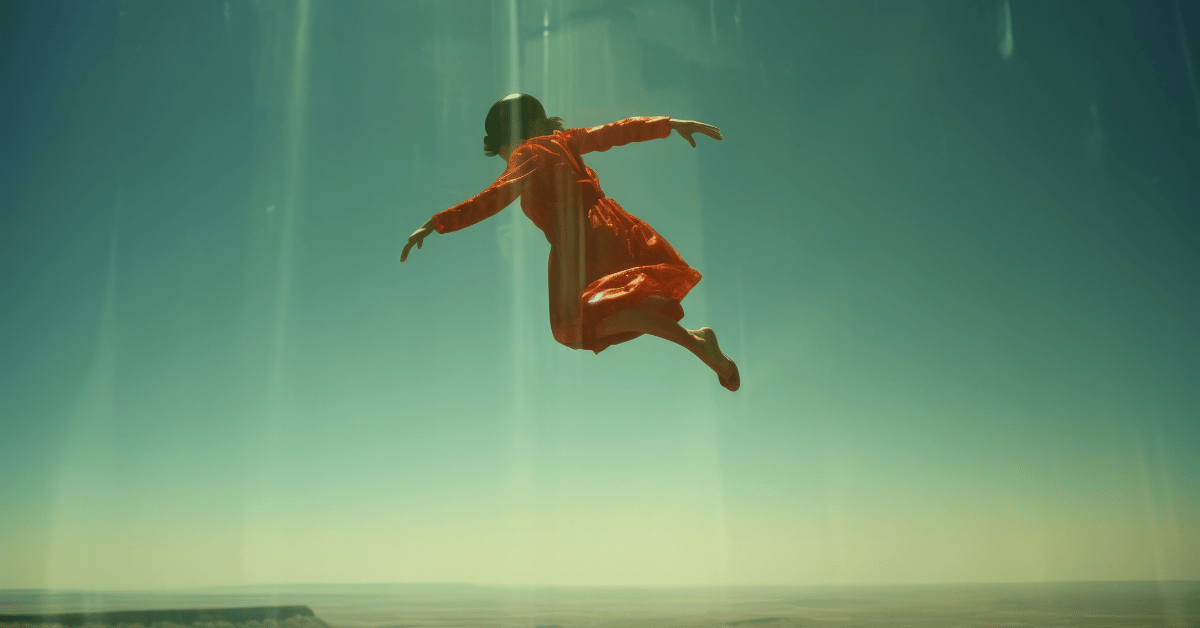Free rider jumps are more than just a daring leap or a gravity-defying spectacle—they’re a deeply ingrained part of action sports culture that melds skill, precision, and personal expression. Whether you’ve seen it in extreme biking videos, snowboarding montages, or parkour documentaries, free rider jumps represent a moment of human flight crafted not just from boldness, but from meticulous technique. This article explores the anatomy of free rider jumps: what they are, how they’ve evolved, the gear required, the communities built around them, and why they continue to captivate thrill-seekers and spectators alike.
What Are Free Rider Jumps?
At its essence, a free rider jump is an aerial maneuver performed as part of a larger ride—typically in mountain biking, BMX, motocross, snowboarding, or freerunning—where the rider uses terrain, speed, and technique to launch into the air, often performing tricks or managing complex landings. Unlike structured jumps in competitions, “free rider” jumps occur in more natural or urban environments, emphasizing creativity, freedom, and flow over conformity.
These jumps aren’t just athletic feats; they’re philosophical statements. The “free rider” mindset values independence, nonconformity, and boundary-pushing—something baked into the DNA of these airborne maneuvers.
A Brief History of Free Rider Culture
The concept of jumping on bikes and boards is hardly new. Kids have been launching off curbs for decades. But “free rider jumps” as a cultural phenomenon began to crystallize in the late 1980s and 1990s when BMX and mountain biking evolved from racing-focused formats to more exploratory and expressive subcultures.
In 2001, the release of the film Freeride Entertainment’s New World Disorder marked a turning point. Riders were seen soaring off cliffs, landing on dirt spines, and flipping over forest gaps. The world took notice.
Snowboarding had a similar arc. By the early 2000s, riders were abandoning resorts’ traditional lines to hike out-of-bounds terrain, creating massive backcountry jumps. Parkour and freerunning followed suit, with athletes transforming staircases and rooftops into stages for dynamic human movement.
Core Disciplines That Feature Free Rider Jumps
The term “free rider jump” spans several disciplines. Here’s how it breaks down across various sports:
| Discipline | Description | Type of Jump | Terrain | Safety Gear |
|---|---|---|---|---|
| Mountain Biking | Off-trail riding with natural and man-made obstacles | Dirt gaps, drops, hip jumps, step-ups | Forests, deserts, bike parks | Helmet, pads, full-suspension |
| BMX Freestyle | Trick-focused cycling in parks or streets | Box jumps, spine transfers, wall hops | Urban parks, ramps | Helmet, gloves, padded shorts |
| Motocross Freestyle | Motorbike-based aerial tricks | Ramp-to-ramp, cliff jumps, whips | Stadiums, outdoor compounds | Helmet, body armor |
| Snowboarding | Off-piste jumps often built in backcountry snow | Kickers, cliff drops, cornice jumps | Mountains, backcountry | Helmet, avalanche gear |
| Parkour/Freerunning | Human-powered jumping and movement across architectural obstacles | Precision jumps, kong vaults, cat leaps | Urban structures, rooftops | Minimal (shoes, gloves) |
The Anatomy of a Perfect Free Rider Jump
A successful jump is part art, part science. Below is a breakdown of the phases:
1. Approach
This is the moment the rider builds up speed, maintains balance, and aligns trajectory. A miscalculation here affects everything afterward. The rider must read terrain, wind, and angle.
2. Takeoff
This is the commitment phase. Whether it’s a dirt ramp or a handrail in an alley, the launch defines the jump’s arc. Most injuries occur when takeoff isn’t clean—so it demands laser focus.
3. Flight
The most cinematic part. In the air, physics takes over. Tricks (whips, flips, spins) happen here. Core strength and spatial awareness separate good riders from great ones.
4. Landing
It’s all about absorbing impact and regaining control. Ideally, landings match the arc of the jump and are built to compress forces. Riders often bend knees or use suspension to prevent injury.
The Gear That Makes It Possible
While courage plays a major role, so does equipment. Free rider jumps demand gear tailored for performance and safety:
- Bike or Board: Designed for durability. In bikes, full-suspension frames help absorb shock. Snowboards for freeride are stiffer and longer.
- Helmet: Full-face helmets are standard in biking and motocross; snow riders use ski-specific helmets.
- Body Armor: Chest protectors, knee/shin guards, elbow pads, and wrist braces are critical.
- Shoes: Grippy soles for BMX and mountain biking; impact-resistant skate-style shoes for parkour.
- Clothing: Breathable, rugged apparel often with built-in padding.
The Role of Terrain: Nature as a Partner
Unlike stadium sports, free rider jumps often rely on raw, unpredictable terrain. This adds both beauty and danger.
- Natural Features: Cliffs, ravines, boulders, sand dunes.
- Urban Features: Rooftops, stair rails, walls.
- Built Parks: Purpose-built jump parks replicate natural conditions but with more control and safety.
Terrain matters not just for safety but for style. The best riders “read” the land like jazz musicians interpret rhythm—improvising in real-time.
Training for Free Rider Jumps: Mental and Physical Demands
You don’t become a free rider overnight. Behind every epic jump lies hundreds of hours of unseen work:
- Strength Training: Core, legs, and upper body to control bikes and boards midair.
- Flexibility: Prevents injury and improves maneuverability.
- Visualization: Mental rehearsal is as important as physical reps.
- Risk Assessment: Knowing when not to jump is as important as the leap itself.
The Culture of Free Rider Jumps
Free rider communities are tightly knit and driven by mutual respect, creativity, and shared adrenaline. From YouTube channels to Red Bull Rampage to obscure Instagram accounts, riders document, critique, and celebrate each other.
There’s an anti-elitist vibe: the best trick isn’t the most complex—it’s the one that flows with terrain and feels right. Style is king.
Subcultures within the scene often evolve:
- Minimalists: No helmets, no cameras, just pure movement.
- Tech Junkies: Use drones, 360 cams, GPS speed trackers.
- DIY Builders: Shape their own jumps using shovels and saws.
Iconic Moments in Free Rider Jump History
- Robbie Maddison’s Paris Las Vegas Arc de Triomphe Jump (2009): A motocross miracle.
- Cam Zink’s 100-foot Backflip (2014): Still considered the boldest trick in mountain biking.
- Candide Thovex’s No-Snow Runs: A snowboarder turning grassy slopes and rocks into jump canvases.
- David Belle’s Rooftop Sequences in “District 13”: Showcased freerunning’s potential to global audiences.
Common Injuries and Prevention
Unfortunately, the price of flight can be steep.
Common Injuries:
| Injury Type | Causes | Prevention |
|---|---|---|
| Wrist/Ankle Sprains | Hard landings or misjudged gaps | Proper gear, rolling technique, pre-run checks |
| Concussions | Head contact during falls | Helmet, foam inserts, airbag vests |
| Broken Collarbones | Over-the-handlebar crashes | Position awareness, learning fall mechanics |
| Spinal Injuries | High-altitude or head-first landings | Progression training, professional coaching |
Future of Free Rider Jumps
Technology is revolutionizing the scene. We’re seeing:
- Virtual Reality: VR trainers that simulate jumps before real-world attempts.
- Wearable Sensors: Data on G-force, airtime, and rotation.
- AI-Assisted Safety: Predicts unsafe jump attempts based on body position.
More than that, social media is expanding the audience. Kids in Brazil or Pakistan now attempt the same jumps as those in Colorado, forming a truly global community.
Environmental Considerations
As jumps move into wilderness or sensitive ecosystems, environmental impact becomes a real concern. Responsible riders:
- Avoid protected wildlife zones
- Reuse existing lines
- Build with biodegradable materials
Organizations like IMBA (International Mountain Biking Association) offer guidelines for sustainable freeriding.
Psychological Highs: Why Riders Keep Jumping
At the core of every jump is a moment of vulnerability—where control surrenders to momentum and gravity. It’s in that fraction of a second that riders feel most alive.
Neuroscience shows these experiences release dopamine, serotonin, and adrenaline—producing what many describe as a “natural high.” But it’s also about pushing fear into focus, converting hesitation into harmony with the air.
Conclusion: A World Above Ground
Free rider jumps are more than just stunts—they’re metaphors for freedom, discipline, and human potential. Every rider, whether launching off a backyard ramp or soaring between mountain cliffs, joins a lineage of adventurers who dare to rise above the ordinary. In a world obsessed with safety and structure, these jumps remind us that risk, when mastered, becomes art.
FAQs
1. What’s the difference between a free rider jump and a competitive jump?
Free rider jumps prioritize style, terrain use, and self-expression, while competitive jumps focus on scores, rules, and formats.
2. Are free rider jumps legal in urban settings?
Not always. Many urban jumps fall into a legal grey area. Riders often avoid damage or trespassing, but laws vary by region.
3. How do riders train without risking injury?
They use foam pits, air bags, and progressive build-up techniques. Mental visualization and VR training also help minimize risks.
4. Is there a governing body for free rider sports?
While some disciplines have federations (e.g., UCI for biking), free rider jumps are largely unregulated to preserve creativity.
5. Can anyone start learning free rider jumps?
Yes, but it’s essential to start small, use proper gear, and seek mentorship or community guidance for safe progression.











